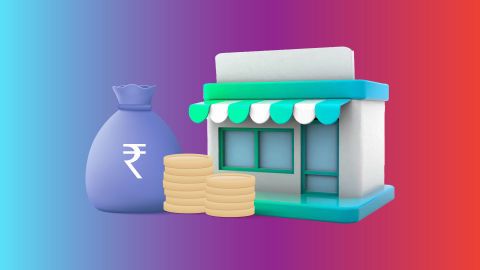History of Commerce
The history of commerce can be traced back to the barter system, which laid the foundation for early marketplaces and eventually led to the introduction of currency. Between the 15th century and the early 20th century, global trade expanded significantly through established routes like the Silk Road and the development of major trade centres. Colonisation and the rise of powerful trade enterprises, such as the British East India Company, further accelerated the global exchange of goods and services, ultimately shaping modern banking systems and international trade networks.
In India, the origins of commerce date back to the Indus Valley Civilisation, known as one of the earliest trading societies. Goods such as cotton, beads, pottery, and spices were commonly exchanged. Over time, empires like the Mauryas, Guptas, and Mughals advanced trade through land-based and maritime routes. During colonial rule, commerce was tightly controlled, with high duties and resource exploitation. Post-independence, India adopted a planned economic model that gradually transitioned through liberalisation and technological reforms, ushering in a new era of commercial growth and global trade integration.
Nature of Commerce
The nature of commerce reflects how it functions within an economy and the value it provides to society. It outlines the essential features that make commerce a driving force behind economic progress and the fulfilment of human needs. Below are the key characteristics:
Commerce enables the exchange and movement of goods
Commerce plays a key role in facilitating the exchange of goods and services between producers and consumers. It helps bridge distances, allowing products to reach even remote locations. With the help of distribution networks and transportation, producers can offer their goods on a local, national, or even international scale, creating access to wider markets.
Commerce focuses on creating utility for consumers
One of the primary functions of commerce is to add value by ensuring products are available at the right place, time, and in the right ownership.
Time utility is created by storing goods until they are required, for example, storing agricultural produce in warehouses until it reaches the market.
Place utility is added by transporting goods where demand exists, such as delivering medicines from manufacturing units to pharmacies.
Possession utility comes into play when ownership is transferred, such as a customer purchasing electronics from a retail outlet.
Commerce contributes to economic development
Commerce is a strong driver of economic growth. It stimulates production by creating demand for goods and services. This increased activity supports industries and leads to job creation in areas like transport, banking, retail, and logistics. Overall, commerce boosts income levels, supports infrastructure, and plays a vital role in national development.
Commerce supports international trade and cooperation
By linking nations through the trade of goods and services, commerce strengthens economic and cultural relationships. It allows countries to import what they lack and export surplus products. For instance, India exports textiles and spices while importing machinery and electronics. This global connectivity helps foster cooperation and mutual growth.
Commerce relies on auxiliary business services
Commerce depends heavily on support services to function smoothly. Banking services enable secure financial transactions, while insurance protects against potential business risks. Transportation ensures timely delivery, and advertising helps promote goods to the right audience. These services work together to maintain an efficient commercial ecosystem.
Access to financial services, such as an MSME loan, plays a vital role in helping small and medium enterprises leverage these auxiliary functions effectively and sustain long-term business growth.
Scope of Commerce
Listed below is the scope of commerce:
- Domestic and international trade: Commerce includes trade within a country (domestic) and across borders (international). Domestic trade involves local buying and selling, while international trade includes exports and imports that connect global markets and fulfil diverse consumer needs.
- Business operations: This involves the complete set of activities a business undertakes, from production and marketing to distribution. Smooth operations help businesses meet customer demands efficiently and maintain competitiveness.
- Finance and banking: Financial institutions provide essential services like credit, loans, and investment options. These services support daily operations, expansion plans, and overall business growth, making them a vital part of commerce. For instance, a personal loan for self employed professionals can be instrumental in funding business-related expenses and managing working capital.
- Insurance and risk management: Insurance protects businesses against unforeseen losses caused by factors like natural calamities or market shifts. Effective risk management ensures business continuity and financial stability.
- E-commerce: The digital arm of commerce enables buying and selling through online platforms. It allows businesses to reach wider audiences, facilitates faster transactions, and promotes global trade through electronic payments and online storefronts.
Examples of Commerce
An example of commerce is international trade between two countries. For instance, if one country possesses abundant oil resources, it can engage in commerce by exporting oil to another nation that lacks such resources. In return, the exporting country receives payment in the form of money or other valuable commodities. This exchange not only fulfils the needs of both parties but also stimulates economic activity and fosters international relationships. Such commerce plays a crucial role in shaping global economies, facilitating specialization, and optimizing resource allocation on a worldwide scale. This process often requires a well-defined capital structure to manage the financial resources and risks involved.
Functions of commerce
Here are the key functions of commerce:
- Facilitation of trade and economic transactions: Commerce ensures smooth transactions between consumers and producers, facilitating economic activities effectively.
- Elimination of geographical barriers: Leveraging transport networks, commerce reduces geographical restrictions, enabling goods to reach consumers globally.
- Management of time constraints: Efficient warehousing in commerce ensures continuous supply chains, minimising delays between production and consumption.
- Financial support and security: Commerce provides secure banking transactions, credit facilities, and reliable payment solutions, addressing financial barriers for businesses and individuals. In particular, a Secured Business Loan can offer access to high-value funding against assets, helping businesses scale with reduced interest burden.
Check your pre-approved business loan offer to access funding tailored to your business’s growth plans.
- Risk management through insurance: Insurance services in commerce safeguard against unexpected losses, providing stability and reassurance.
- Knowledge dissemination via advertising: Commerce disseminates product information through advertising, empowering consumers with knowledge for informed purchasing decisions.
- Integral role in economic growth: Overall, commerce is indispensable for a thriving economy, bridging gaps and optimising economic efficiency through a strong working capital cycle.
Difference between Commerce, business and trade
The table below highlights the fundamental differences between commerce, trade, and business in terms of scope, function, and involvement.
Aspect
|
Business
|
Commerce
|
Trade
|
Definition
|
Organised activity of producing, selling, or providing goods/services for profit
|
All activities that facilitate the buying and selling of goods and services
|
Direct exchange of goods or services between buyers and sellers
|
Core Function
|
Creation and management of goods and services for value generation
|
Supports trade through distribution, finance, transport, and communication
|
Involves actual buying and selling of goods
|
Scope
|
Broadest—includes production, marketing, HR, finance, logistics, etc.
|
Includes trade and supporting services like banking, insurance, warehousing
|
Narrowest—limited to actual sale and purchase
|
Objective
|
Generate profit through all economic activities
|
Enable smooth flow and exchange of goods and services
|
Facilitate exchange and fulfil demand
|
Focus Area
|
Entire supply chain from ideation to delivery
|
Exchange and distribution of finished goods
|
End transaction involving transfer of ownership
|
Involvement
|
Producers, managers, employees, service providers
|
Buyers, sellers, service providers, financial intermediaries
|
Sellers and buyers only
|
Time Orientation
|
Includes pre-production, production, and post-production phases
|
Post-production activities enabling delivery and sale
|
Final stage where goods are sold to the consumer
|
Capital Requirement
|
Often high due to infrastructure, machinery, and workforce needs
|
Moderate, focused on logistics and support functions
|
Comparatively low, mainly inventory and transaction-related costs
|
Examples
|
Running a textile manufacturing unit, managing retail chains
|
Warehousing, transport, advertising, banking, insurance linked to trade
|
Purchasing garments from a retail store or wholesalerrds.
|
Branches of commerce
Commerce branches into three key categories:
- Trade: Involves buying and selling goods.
- Aid to trade: Supports trade activities, including transportation, banking, and insurance.
- Auxiliaries to trade: Encompasses services like advertising, communication, and warehousing that aid in the smooth functioning of trade.
Regulating commerce
Regulating commerce involves creating and enforcing rules and policies to ensure fair, efficient, and ethical conduct within economic activities. The Commerce Department typically oversees a wide range of commercial activities, including trade policies, industry regulations, market analysis, and business development initiatives. It collaborates with other governmental agencies and international organizations to formulate and implement policies that promote economic growth, job creation, and global competitiveness. Through research, advocacy, and outreach efforts, the Commerce Department plays a crucial role in shaping and enforcing regulations that govern commerce, ensuring transparency, fairness, and compliance with legal standards in commercial activities.
The rise of e-commerce
The rise of e-commerce has revolutionized the way businesses operate and consumers shop. With the advent of the internet, commerce has transcended physical boundaries, allowing transactions to occur seamlessly online. This exponential growth in e-commerce has prompted governments worldwide to adapt and establish dedicated departments, such as the Commerce Department, to regulate and facilitate digital trade. These departments play a crucial role in crafting policies that address the unique challenges and opportunities presented by e-commerce, including cybersecurity, data privacy, taxation, and cross-border trade regulations.
Moreover, the Commerce Department collaborates with industry stakeholders to foster innovation, enhance market access, and ensure a level playing field for businesses of all sizes. By promoting digital literacy and supporting e-commerce infrastructure development, these departments facilitate economic growth, job creation, and international competitiveness. As e-commerce continues to evolve, the Commerce Department remains instrumental in navigating the complexities of the digital economy and maximizing its benefits while safeguarding consumer rights and promoting fair competition.
What are the different types of commerce?
Different types of commerce include:
- E-commerce (Electronic Commerce): Conducting commercial transactions electronically over the internet. It includes online retail, electronic payments, and digital marketing.
- Brick-and-mortar commerce: Traditional commerce conducted through physical stores or outlets where customers visit to purchase goods or services directly.
- Mobile commerce (M-commerce): Buying and selling goods or services using mobile devices such as smartphones or tablets. It often involves mobile apps or mobile-optimized websites.
- B2B (Business-to-Business) commerce: Transactions conducted between businesses, such as wholesale purchases, supply chain management, and procurement.
- B2C (Business-to-Consumer) commerce: Transactions between businesses and individual consumers, such as online retail purchases and service subscriptions.
- C2C (Consumer-to-Consumer) commerce: Direct transactions between individual consumers, facilitated by online platforms or marketplaces where individuals can buy, sell, or exchange goods or services.
- Social commerce: Integration of social media platforms with e-commerce, allowing users to discover, share, and purchase products or services within their social network.
- International commerce: Commercial transactions conducted across international borders, involving import/export activities, foreign exchange, and international trade regulations.
Importance of commerce
Commerce plays a vital role in shaping economies and improving everyday life through trade, employment, and innovation. Here’s how:
Facilitates economic growth: Commerce drives the economy by promoting the exchange of goods and services, leading to higher production, income, and employment generation.
Supports job creation: It generates employment across various sectors such as retail, logistics, finance, manufacturing, and marketing, helping reduce unemployment.
Enables wealth creation: Through trade, individuals and businesses earn income, which can be reinvested to support expansion, innovation, and long-term prosperity.
Encourages specialisation and efficiency: Commerce promotes division of labour, allowing businesses to focus on core strengths, reduce production costs, and improve productivity.
Fosters innovation: Competitive markets drive businesses to develop new products, services, and technologies to meet evolving customer needs.
Promotes globalisation: It connects nations through international trade, enabling access to global markets, diverse goods, investment, and cultural exchange.
Drives infrastructure development: Commerce necessitates efficient transport, communication, and financial systems, leading to improvements in national infrastructure.
Improves standard of living: It ensures access to a wide variety of goods and services, enhancing consumer choice, affordability, and quality of life.
Connects producers and consumers: By bridging the gap between supply and demand, commerce ensures fair and timely distribution of products across regions.
Commerce business models
Commerce business models encompass various strategies for generating revenue and delivering value to customers. Traditional models like B2C (Business-to-Consumer) involve direct sales to end-users, while B2B (Business-to-Business) focuses on transactions between businesses. E-commerce platforms operate solely online, eliminating physical storefronts. Subscription-based models offer products or services on a recurring basis, fostering customer loyalty. Marketplaces connect buyers and sellers, facilitating transactions. Freemium models provide basic services for free, with premium features available for a fee. Peer-to-peer models enable direct exchanges between individuals. Hybrid models combine multiple strategies for versatility. Adaptability and customer-centricity are key in navigating the dynamic landscape of commerce business models.
B2C: Business-to-Consumer
B2C, or Business-to-Consumer, is a commerce model where businesses sell products or services directly to end-users. It encompasses a wide array of industries, from retail to services like entertainment and education. B2C transactions typically occur through various channels, including online platforms, physical stores, and mobile apps. Customer experience is paramount in B2C, with companies focusing on personalization, convenience, and seamless interactions. Marketing efforts in B2C often target individual consumers, aiming to build brand loyalty and drive repeat purchases. As technology evolves, B2C businesses continually adapt their strategies to meet changing consumer behaviours and preferences, ensuring relevance and competitiveness.
B2B: Business-to-Business
B2B, or Business-to-Business, is a commerce model where transactions occur between businesses rather than between a business and individual consumers. It encompasses a vast range of industries, from manufacturers sourcing raw materials to software companies providing solutions to enterprises. B2B transactions often involve larger volumes and higher values than B2C transactions. Relationships and trust play crucial roles in B2B interactions, with companies prioritizing long-term partnerships and value-added services. Marketing in B2B focuses on educating and engaging key decision-makers within other businesses. Customization, efficiency, and reliability are key pillars of success in the B2B space, driving innovation and collaboration among companies.
B2A: Business-to-Administration
B2A, or Business-to-Administration, is a commerce model where businesses provide goods or services to government entities or administrations. This model encompasses a wide range of transactions, from supplying office equipment to offering consulting services for public projects. B2A interactions often involve adherence to strict regulations and compliance requirements set by government bodies. Companies operating in the B2A space need to navigate bureaucratic processes and often undergo rigorous procurement procedures. Trust, transparency, and reliability are crucial for success in B2A transactions, as government agencies prioritize accountability and value for taxpayer money. Collaboration between businesses and administrations drives innovation and efficiency in public service delivery.
C2A: Consumer-to-Administration
Consumer-to-Administration (C2A) bridges citizens and governmental bodies, facilitating seamless interaction. Through digital platforms, citizens engage with administrative entities for services, feedback, and information dissemination. C2A optimizes administrative processes, enhancing transparency, efficiency, and accessibility. Citizens can submit applications, pay taxes, or access public records conveniently, reducing bureaucratic hurdles. Moreover, it fosters citizen participation in governance, empowering them to voice concerns and contribute to decision-making. C2A cultivates trust between citizens and administrations, promoting accountability and responsiveness. As governments embrace digital transformation, C2A emerges as a vital conduit for inclusive, citizen-centric governance, ushering in a new era of administrative efficiency and public engagement.
C2C: Consumer-to-Consumer
Consumer-to-consumer (C2C) refers to transactions that occur directly between individuals, facilitated by online platforms or classified ads. eBay and Craigslist are prime examples. C2C allows individuals to buy, sell, or exchange goods and services without intermediaries like retailers. This model promotes accessibility and affordability, empowering users to monetize possessions or find unique items. However, it also presents challenges such as trust issues and quality assurance. Ratings and reviews mitigate risks, fostering trust within the community. C2C stimulates the sharing economy, encouraging sustainability and resourcefulness. Its flexibility and convenience continue to reshape traditional commerce, shaping a dynamic marketplace driven by peer-to-peer interactions.
C2B: Consumer-to-Business
Consumer-to-business (C2B) flips the traditional consumer-business relationship, with individuals offering products or services to businesses. Platforms like Upwork and Fiverr exemplify this model, enabling freelancers to sell their skills directly to companies. C2B offers flexibility for both parties, allowing businesses to access specialized expertise without hiring full-time staff, while individuals gain autonomy and control over their work. This model fosters a diverse marketplace, promoting innovation and efficiency. However, it also poses challenges such as ensuring quality and reliability. C2B blurs the lines between consumer and entrepreneur, empowering individuals to monetize their talents and contribute to the economy in new and impactful ways.
DTC: Direct-to-Consumer
Direct-to-consumer (DTC) refers to the business model where products are sold directly to consumers, bypassing traditional retail channels. Enabled by the internet, DTC brands offer convenience, personalized experiences, and often lower prices. By controlling the entire customer journey, from production to marketing to sales, DTC brands build stronger connections with their audience, gather valuable data, and can adapt quickly to changing preferences. This model fosters innovation, allowing brands to experiment with unique products and marketing strategies. However, it also poses challenges such as managing customer relationships effectively and competing in an increasingly crowded market.
Conclusion
Commerce, as a multifaceted domain, not only drives economic prosperity but also fosters collaboration and interconnectedness among nations. Understanding its diverse branches is crucial for navigating the dynamic landscape of global trade and economic development. For financial support in commerce, consider the Bajaj Finserv Business Loan.






